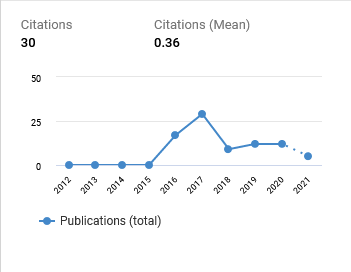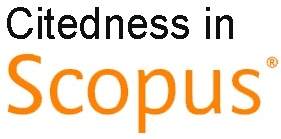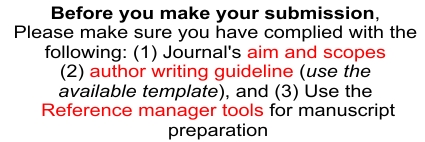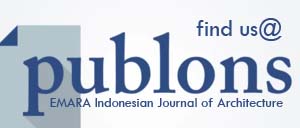Spatial changes in the Sekumpul's Moslem Settlement Area Related to the KH Muhammad Zaini Abdul Ghani's Da'wah Activities
DOI:
https://doi.org/10.29080/eija.v5i2.850Keywords:
settlement development, spatial function, Sekumpul settlement, ulama's roleAbstract
Ulama have taken an important role in the people of South Kalimantan, not only in terms of social cohesion but also in the forerunner of Muslim settlements. Taking the case in Sekumpul Martapura, This study tries to identify the development pattern of the Sekumpul settlement delineation due to KH Muhammad Zaini Abdul Ghani's da'wah activities, and identification of changes in the function of the area. The settlement delineation spatial-sprawl obtained by Google Earth and Geospatial Information Agency and supported by structured interviews with key informants using a snowball sampling technique. The results showed the expression of spatial delineation development in the Sekumpul area run naturally and adapted what looks like an octopus pattern with the road network as its dominant factor. In the 1980s until recently the Sekumpul area has experienced three times changes in its function, from the center of propagation, residential, into economic functions with its religious tourism concept. There were no specific guidelines found in the da'wah material regarding the technical aspects of spatial development. One important message conveyed by KH Muhammad Zaini Abdul Ghani was to uphold the rights of guests. This concept was then very tightly held by the residents of Sekumpul, which impacted on the maximum provision of facilities and infrastructure for the pilgrims.
Downloads
References
Abbas, E. W. (2015). Guru Sekumpul: Bacaan Pengantar. Banjarmasin: Lembaga Pengkajian Kebudayaan dan Pembangunan Kalimantan (LPKPK) & Penerbit Wahana Jaya Abadi.
Abdurrahman. (2010, October 19). Selayang Pandang Majelis Ta’lim Arraudhah Sekumpul Martapura.
Akbar, J. (1988). Crisis in the built environment: The case of the Muslim city. Singapore: Concept Media.
Aziz, A. (2011, July 16). Peranan Ulama Dalam Transformasi Sosial Budaya Menuju Masyarakat Madani. Retrieved 3 October 2018, from Grinting Community website: https://grintingcommunity.wordpress.com/2011/07/16/peranan-ulama-dalam-transformasi-sosial-budaya-menuju-masyarakat-madani/
Caesarina, H. M., & Aina, N. (2018). Planning and design approach in Islamic green city towards sustainable city: The case of Martapura. IOP Conference Series: Materials Science and Engineering, 403, 012001. doi: 10.1088/1757-899X/403/1/012001
Dinas Pariwisata Kabupaten Banjar. (2017). Data Pengunjung Wisata Religi Sekumpul Martapura. Banjar: Dinas Pariwisata Kabupaten Banjar.
Hudson, J. C. (1969). A Location Theory for Rural Settlement. Annals of the Association of American Geographers, 59(2), 365–381. doi: 10.1111/j.1467-8306.1969.tb00676.x
Latifah, N., Soemardiono, B., & Faqih, M. (2018). The Arrangement of Religious Tourism Corridors in Sekumpul Martapura Based On Livable Street. International Journal of Scientific and Research Publications (IJSRP), 8(7). doi: 10.29322/IJSRP.8.7.2018.p7973
Mirhan, M. (2016). Karisma K.H. Muhammad Zaini Abdul Ghani Dan Peran Sosialnya (1942-2005). Jurnal Ilmiah Ilmu Ushuluddin, 12(1), 59–86. doi: 10.18592/jiu.v12i1.135
Mortada, H. (2003). Traditional Islamic Principles of Built Environment. New York: Routledge.
Mujiburrahman, M., & Abidin, M. Z. (2012). Ulama Banjar Kharismatik Masa Kini di Kalimantan Selatan: Studi Terhadap Figur Guru Bachiet, Guru Danau, dan Guru Zuhdi. Al-Banjari : Jurnal Ilmiah Ilmu-Ilmu Keislaman, 11(2), 107–136. doi: 10.18592/al-banjari.v11i2.421
Pemkab Banjar. (2017). Peta Haul Abah Guru Sekumpul ke 12. Pemerintah Kabupaten Banjar.
Priyoto. (2012). Penerapan Konsep Kota Islami dan Pengaruhnya Terhadap Sosial Budaya Masyarakat. KasusL Perumahan REWWIN, Waru (Undergraduate Thesis). Universitas Muhammadiyah Surakarta, Surakarta.
Rachman, H. F. (2010). Kajian Pola Spasial Pertumbuhan Kawasan Perumahan Dan Permukiman Di Kecamatan Limboto Kabupaten Gorontalo (Thesis, Universitas Diponegoro). Retrieved from http://eprints.undip.ac.id/23683/
Rasidi, M. (2016, March 15). Hijrah Ke Sekumpul ( Sungai Kacang ). Retrieved 1 October 2019, from Cinta dan Rindu website: http://rindurasul2.blogspot.com/2016/03/hijrah-ke-sekumpul-sungai-kacang.html
Rizani, A. (2019). Wawancara Narasumber.
Saoud, R. (2002). Introduction to the Islamic City. Foundation for Science and Technology and Civilisation.
Yoelianto, B. (2005). Kajian Spasial Perkembangan Spasial Perkembangan Kota Purwodadi (Thesis, Universitas Diponegoro). Retrieved from http://eprints.undip.ac.id/15094/

Downloads
Published
How to Cite
Issue
Section
Categories
License
Copyright (c) 2019 Muhamad Ratodi, Arfiani Syariah

This work is licensed under a Creative Commons Attribution-ShareAlike 4.0 International License.
- Authors retain copyright and grant the journal right of first publication with the work simultaneously licensed under a Creative Commons Attribution ShareAlike License that allows others to share the work with an acknowledgment of the work's authorship and initial publication in this journal.
- Authors are able to enter into separate, additional contractual arrangements for the non-exclusive distribution of the journal's published version of the work (e.g., post it to an institutional repository or publish it in a book), with an acknowledgment of its initial publication in this journal.
- Authors are permitted and encouraged to post their work online (e.g., in institutional repositories, pre-print sites, or on their website) prior to and during the submission process, as it can lead to productive exchanges, as well as earlier and greater dissemination of published work.
































